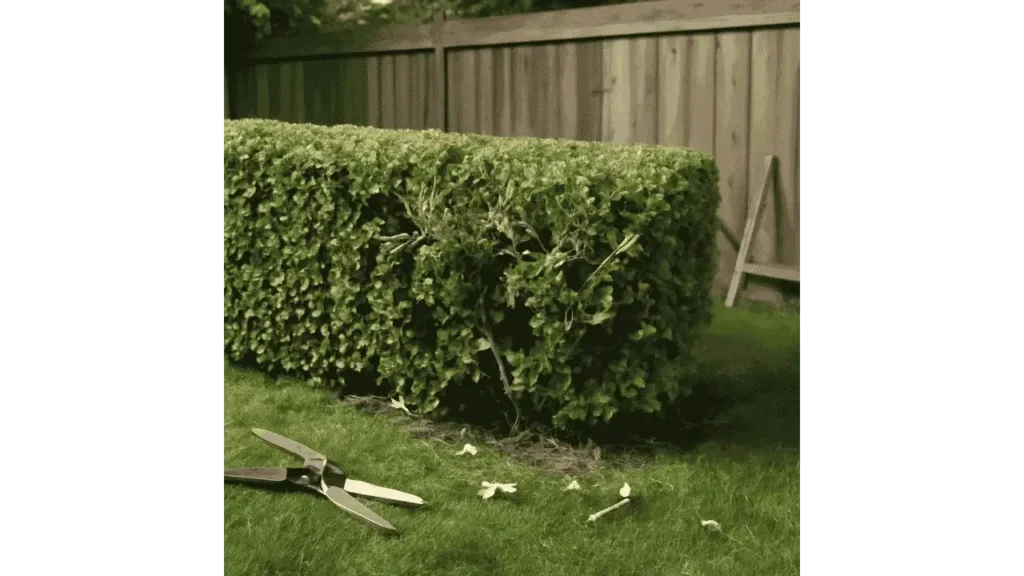When it comes to maintaining your yard, a pole saw can be a tempting tool for trimming bushes. However, before you reach for that extendable saw, it’s essential to understand the key differences between pole saws and tools designed specifically for bush trimming. As an expert with years of experience in tree and shrub care, I can confidently tell you that while pole saws can handle some tasks in bush maintenance, they are not always the best choice. Let’s break down when and why a pole saw might be suitable, as well as the potential drawbacks and risks.

Understanding Pole Saws and Their Intended Use
Designed for Tree Branches, Not Bushes
Pole saws are primarily designed to tackle thicker, woodier materials typically found in tree branches. Their chain saw blades work best on higher branches that require height and cutting power, not on the smaller, flexible branches of bushes. This makes them inefficient for precise bush trimming.
Reach and Maneuverability Considerations
While the extended reach of a pole saw can make it seem ideal for reaching difficult areas of dense bushes, its design makes it harder to maneuver in tight spaces. This could lead to strain or difficulty in controlling the tool effectively.
“Pole saws are excellent for cutting tree branches but are not made for the precision required in trimming bushes, which need much more delicate handling.” – Mark Williams, Landscaping Expert
Potential Benefits of Using a Pole Saw on Bushes
Handling Overgrown or Woody Bushes
In certain cases, when bushes have thick, woody stems that are tough to cut with hedge trimmers, a pole saw can help by removing larger branches. This is especially useful when bushes have become overgrown and need heavy-duty cutting for clearance.
Accessing Hard-to-Reach Areas
Another benefit of using a pole saw is the extended reach it offers, allowing you to trim sections of bushes that are difficult to reach. This is particularly useful for trimming tall or deep sections without needing a ladder.
Drawbacks and Risks of Using a Pole Saw on Bushes
Lack of Precision
One of the biggest disadvantages of using a pole saw for bushes is the lack of precision. Since pole saws are designed for cutting through wood, their chainsaw blades are not ideal for creating the clean, neat cuts required for healthy bush trimming.
“Pole saws can cause rough cuts that stress the bush’s health and make the trim look uneven. When cutting bushes, precision is key, and a pole saw simply isn’t designed for that.” – Rachel Green, Horticulturist
Safety Concerns
Using a pole saw on bushes increases the safety risks significantly. The tool’s awkward design makes it difficult to control, especially in tight spaces or when working with smaller branches. The risk of injury, especially when the tool is used horizontally or at an awkward angle, is much higher.
Potential Damage to the Tool
The chain saw blade of a pole saw is designed to cut through tough wood, not the softer, more flexible branches of bushes. Using a pole saw on bushes can dull the blade quickly, requiring frequent maintenance and potentially leading to long-term damage.
Recommended Alternatives for Bush Trimming
Hedge Trimmers
Hedge trimmers are the ideal tool for trimming bushes. Designed specifically for precise cutting, they offer greater control and are more efficient in shaping bushes and hedges while maintaining plant health.
Manual Pruners or Loppers
For smaller or delicate bushes, manual pruners or loppers provide the necessary control to make clean, accurate cuts. These tools are particularly beneficial for detailed trimming without causing harm to the plant.
Final Takeaways
While a pole saw can technically be used to cut bushes, it is not the best tool for the job. The lack of precision, potential safety risks, and possible damage to both the plant and the tool make it a less favorable choice. For optimal results and plant health, rely on tools designed specifically for bush trimming, such as hedge trimmers or manual pruners. Keep your yard looking neat and healthy by using the right tool for the job, and you’ll avoid unnecessary damage and frustration.
- How Many Watts Does a Circular Saw Use and Why Does It Matter? - December 1, 2025
- Can You Cut Acrylic With a Circular Saw Safely and Cleanly? - November 29, 2025
- Which Way Does a Circular Saw Blade Go on Your Saw? - November 28, 2025
